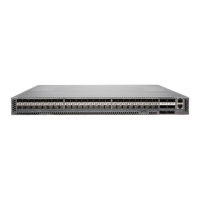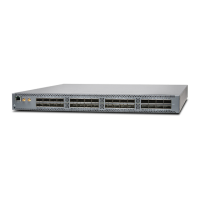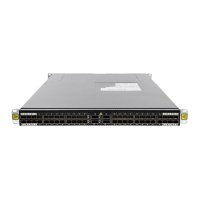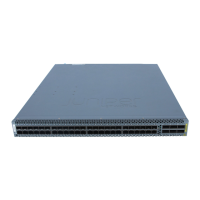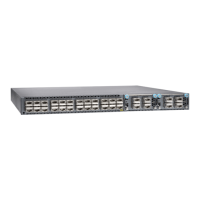The four major QFabric system components include the following:
•
Director group—The Director group is a management platform that establishes,
monitors, and maintains all components in the QFabric system. It is a set of Director
devices that run the Junos operatingsystem (JunosOS)on top of a CentOS foundation.
The Director group handles tasks such as QFabric system network topology discovery,
Node and Interconnect device configuration and startup, and Domain Name System
(DNS), Dynamic Host Configuration Protocol (DHCP), and Network File System (NFS)
services. The Director group also runs the software for management applications, hosts
and load balances internal processes for the QFabric system, and starts additional
QFabric system processes as requested.
A Director group must contain a set of enhanced Director devices with hard drives that
run dual processes in active and standby mode for maximum redundancy. Enhanced
Director devices in the Director group provide full processing services, whereas other
Director devices without hard drives provide auxiliary support to the Director group.
•
Node devices—A Node device is a hardware system located on the ingress of the
QFabric system that connects to endpoints (such as servers or storage devices) or
external networks, and is connected to the heart of the QFabric system through an
Interconnect device. A Node device can be used in a manner similar to how a top-of-rack
switch is implemented. By default, Node devices connect to servers or storage devices.
However, when you group Node devices together to connect to a network that is
external to the QFabric system, the formation is known as a network Node group.
•
Interconnect devices—An Interconnect device acts as the primary fabric for data plane
traffic traversing the QFabric system between Node devices. To reduce latency to a
minimum, the Interconnect device implements multistage Clos switching to provide
nonblocking interconnections between any of the Node devices in the system.
•
Control plane network—The control plane network is an out-of-band Gigabit Ethernet
management network that connects all QFabric system components. For example,
you can use a group of EX4200 Ethernet switches configured as a Virtual Chassis to
enable the control plane network. The control plane network connects the Director
group to the management ports of the Node and Interconnect devices. By keeping the
control plane network separate from the data plane, the QFabric system can scale to
support thousands of servers and storage devices.
The four major QFabric system components can be assembled from a variety of hardware
options. Currently supported hardware configurations are shown in Table 3 on page 9.
Copyright © 2012, Juniper Networks, Inc.8
QFX3000 Hardware Documentation
